Engaging in wildlife photography can be one of the most rewarding experiences for both professional and amateur photographers alike. It allows you to capture the essence of nature and its inhabitants through your camera lens, creating a timeless connection between humans and wildlife. To get started, it’s essential to understand the basic principles and techniques that contribute to a successful animal photo shoot.

Choosing the right equipment is a fundamental step. For crisp action shots, selecting a camera with a fast shutter speed—at least 1/500s—is crucial to freeze the movements of animals. A wide aperture, ranging from f/2.8 to f/5.6, will help let in more light and create a blurred background, making your subject stand out sharply against its habitat.
While a telephoto lens can certainly bring distant wildlife closer, remember that it’s not mandatory for capturing the beauty of animals. Sometimes, stepping back and including the environment in your frame can tell a more compelling story about your wild subjects.
Your approach to photographing animals should also be considerate and strategic. To capture their natural behavior, patience is key. Spend time quietly observing your subject to anticipate its next move.
Positioning yourself wisely—whether it means lying on the ground or finding an elevated vantage point—will enable you to meet your subject at eye level and add a sense of intimacy to your photographs.
Avoid relying on digital zoom; instead, try to get physically closer whenever it’s safe and respectful to do so without disturbing the wildlife. With these techniques, whether you’re a seasoned professional or a dedicated enthusiast, you can create stunning portraits that vividly portray the spirit of the wild.
See Related: Permanent Impressions: A Guide to Wildlife Sleeve Tattoos for Ladies
Understanding Animal Behavior
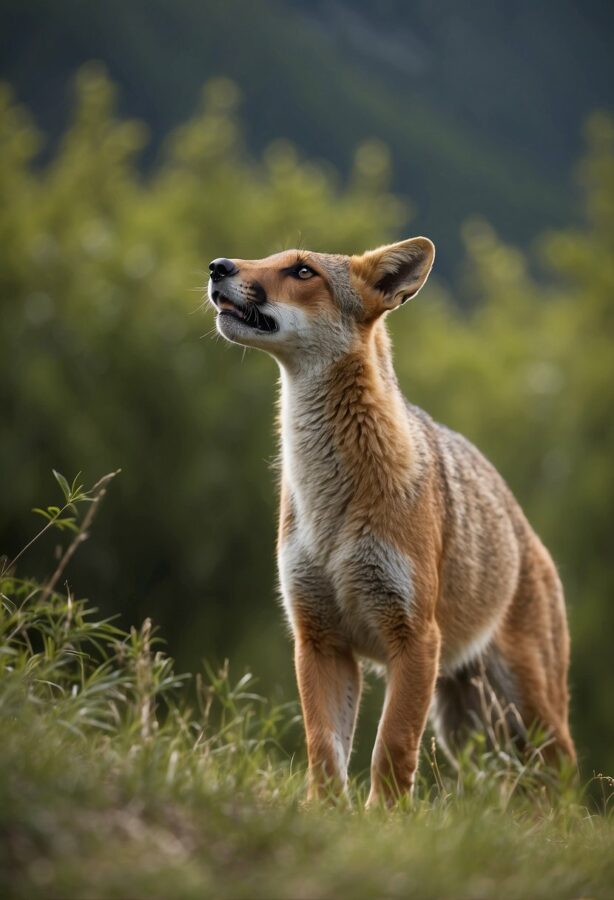
To excel in animal photography, a deep understanding of animal behavior is invaluable, informing both the timing and composition of your shots.
The Importance of Patience
Patience is a virtue essential for any wildlife photographer, whether you’re engaging in a professional safari shoot or capturing the local wildlife. The key is to:
- Wait: Observing your subject quietly often reveals patterns in behavior and habits.
- Focus: Be prepared to focus intently on the subject for extended periods.
For instance, animals might frequent watering holes at certain times, which you can leverage for better photograph opportunities.
Engaging with Your Subject
Engaging with your subject requires:
- Research: Learn about the species you plan to photograph to anticipate their behavior.
- Study Local Wildlife: This informs you about the conservation status of species and any related laws.
- Animal Photography Tips: Utilize a mid-range zoom lens for herds or packs and a super-telephoto lens for individual animals and birds.
When studying animals, keep your interactions non-invasive to avoid disturbing their natural behaviors, ensuring ethical photography standards are upheld.
Setting the Scene
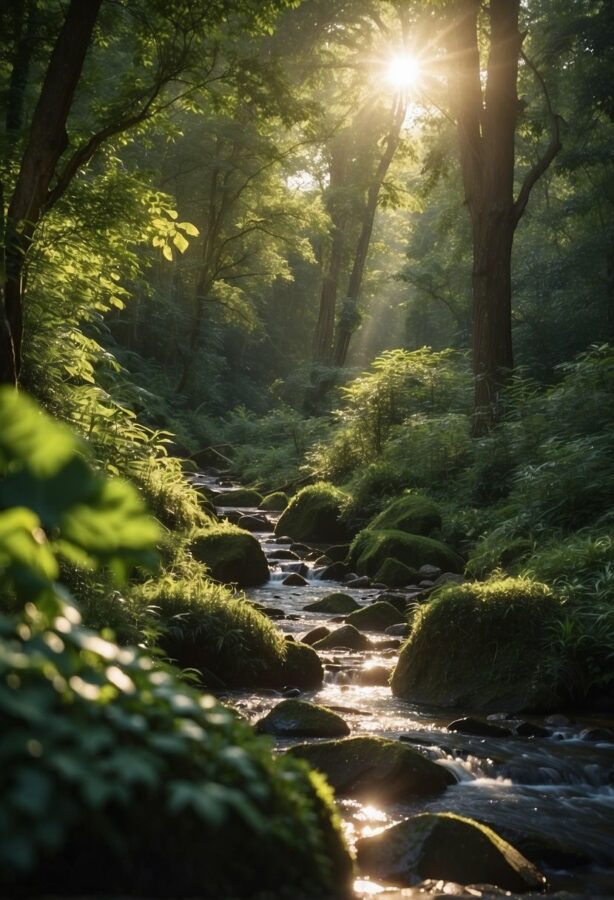
The scene you create in wildlife photography can transform a simple picture into a compelling narrative. Here, we discuss how finding unique angles is a cornerstone of this transformation.
Finding Unique Angles
When you approach wildlife photography, consider your composition and technique to set a powerful scene. Your location is pivotal. Whether you’re in a natural habitat or closer to home in your backyard, think about the magnification and angles you will need to capture the essence of the environment. For example:
- Local Park: A lower magnification might be sufficient to capture animals within their natural state, with familiar backdrops.
- Wild Habitat: You’ll often need higher magnification to safely photograph from a distance, especially for timid or dangerous animals.
Always prioritize safety—for yourself and the subject. Be mindful not to disturb the natural state of the wildlife you’re photographing. Seek unique angles that offer an intimate glance into the world of your subject without intrusion. To achieve this:
- Try different elevations: Photograph from a higher vantage point or get down to ground level for a new perspective.
- Move around the habitat: Position yourself so that the background complements your subject, considering the natural light and the color of the background.
A thoughtful approach to finding unique angles also involves assessing your surroundings for natural frames, such as branches or holes in foliage, which add depth and interest to your composition.
In brief, setting the scene with unique angles is essential for portraying animals compellingly, regardless of whether you’re in a park or the depths of the wilderness. Your technique in capturing these scenes should respect the animal’s habitat and contribute to a story that invites viewers to see something exceptional about the seemingly mundane.
See Related: Fun Facts About Fennec Foxes: Discover the Amazing World of Desert Cuties
The Right Gear
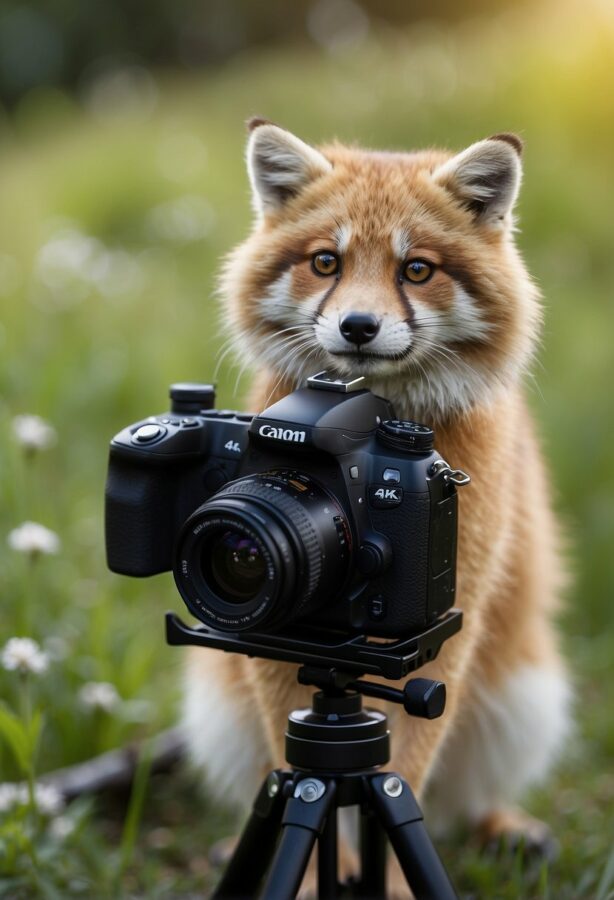
Choosing the right equipment is crucial for capturing the stunning and ephemeral moments in wildlife photography.
Capturing Movement
Camera Settings: For wildlife on the move, your camera should be set to a fast shutter speed. Advance to at least 1/500 s to freeze motion. Combine this with a wide aperture—f/2.8 to f/5.6—to allow ample light and achieve a soft, nondistracting background.
Lenses for Wildlife: A telephoto lens is essential, ranging from 100mm to 600mm, depending on the distance of your subject. For birds or distant wildlife, choose lenses at the higher end of this spectrum or a telephoto zoom lens for versatility.
- Telephoto Lens: Ideal for capturing clear images of distant subjects without disturbing them.
- Zoom Lens: Allows you to quickly adjust your framing as animals move.
- Wide-Angle Lens (optional): Useful for landscapes with wildlife.
- Macro Lens (for close-up enthusiasts): For details in smaller wildlife or insects.
Camera Type: Mirrorless cameras offer high-speed burst modes and excellent low-light performance, essential for both dawn and dusk activities of wildlife. DSLRs, known for their robust build, also serve well.
ISO Settings: Ensure your camera excels in low-light ISO performance to manage digital noise. Begin at ISO400 and adjust as needed to balance a correct exposure with minimal noise.
Tripod and Stabilization: A sturdy tripod or gimbal head is necessary to support long lenses without introducing camera shake. Invest in one with weather-sealed features if you’re venturing into rough elements.
Additional Tips and Equipment:
- Optical Stabilization: Select lenses with built-in stabilization for sharper images.
- Manual Mode: Learn to swiftly adjust your settings manually to adapt to changing conditions.
- Weatherproof Gear: A weather-sealed camera and lens are imperative; don’t forget a rain cover.
- Camera Backpack: Protect and organize your gear with a robust camera backpack.
- Camouflage: To remain inconspicuous, consider using camouflage covers for your equipment.
Whether you’re a beginner or expert, ensuring that your gear caters to capturing movement in wildlife photography will heighten the impact of your images significantly.
See Related: Cuteness Overload: 15 Photos of Mother and Baby Animals
Post-processing Techniques
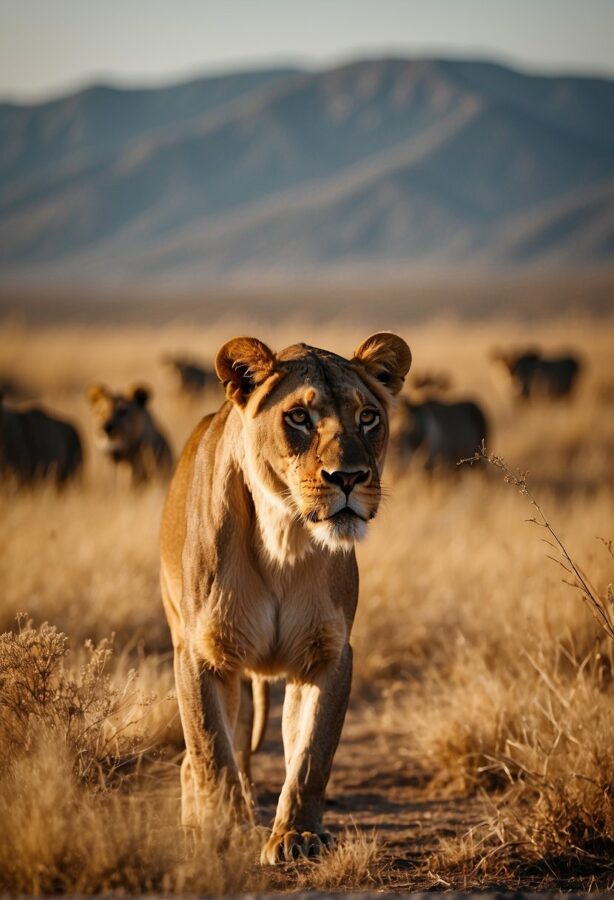
After you’ve captured your wildlife photographs, enhancing them during post-processing can significantly improve the final image. Your expertise with camera settings and shooting techniques lays the foundation, but your post-processing skills can bring that extra touch of finesse to your work.
Adjusting Exposure and Contrast
- Exposure: Check your photograph for proper exposure. Sometimes, a minor tweak can bring out hidden details.
- Contrast: Modify the contrast to emphasize textures and patterns in nature’s designs.
White Balance and Color Correction
- White Balance: Use tools to correct any unnatural color casts. This step ensures the colors in your photograph reflect the true hues of the natural world.
- Saturation/Vibrance: Boosting these subtly can make your image pop without looking unnatural.
Sharpening Details and Noise Reduction
- Employ sharpening filters to enhance focus on your subject. Be judicious—over-sharpening can make images look artificial.
- Utilize noise reduction software, especially if you’re working with low-light shots, to maintain the clarity of your photograph.
Cropping for Composition
- Crop your images to improve composition and direct focus to the subject. Follow the rule of thirds to create a balanced photo.
Remember, each image requires a unique touch. With practice, your ability to discern how much and what kind of post-processing is needed will become second nature.
While professionals may employ an extensive post-processing workflow, even beginners can make significant improvements with these basic adjustments. In wildlife photography, where capturing the essence of the wild is the goal, skillful post-processing can elevate a simple capture into a compelling story of nature.
See Related: Obese Bearded Dragon Care: Tips for Weight Loss and Health
Ethical Considerations
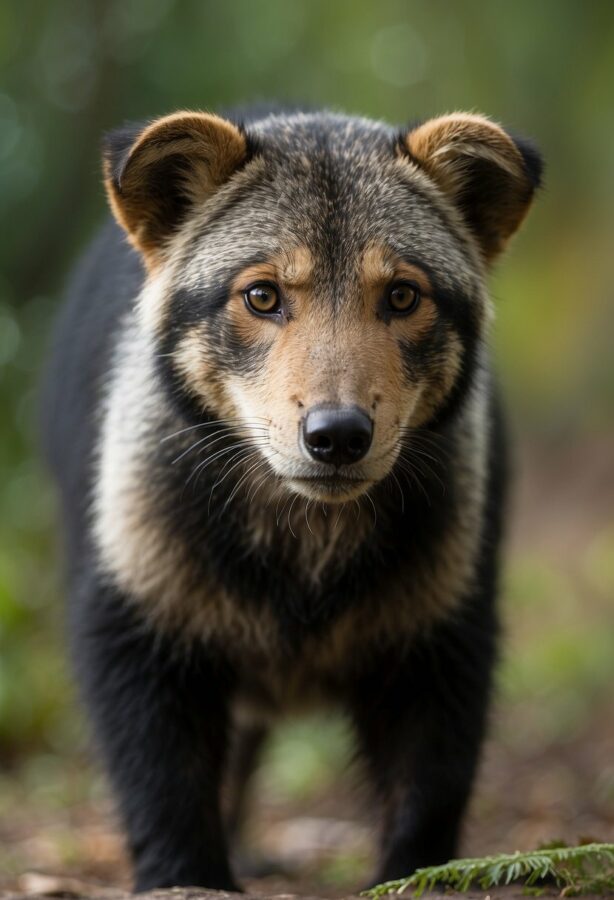
When engaging in wildlife photography, you must prioritize the well-being of animals and conservation. Photography should never come at the expense of the subject’s welfare. Adhere to ethical standards to minimize the impact on wildlife and their natural habitat.
Respect the Law: Ensure you understand and follow all local and federal laws regarding wildlife and habitat protection. These regulations are designed to safeguard both the subjects of your photography and the ecosystems they inhabit.
Minimize Distractions: Avoid causing stress or alterations in the behavior of wildlife. Use appropriate lenses to keep a safe distance, ensuring you do not disrupt their natural activities or surroundings.
Foster Conservation: Through your lens, you have the power to influence public opinion and promote conservation efforts. Aim to tell a story with your images that encourages respect for nature and highlights the importance of preserving biodiversity.
- Avoid baiting or calling wildlife to get the perfect shot.
- Stay on designated paths and trails to prevent habitat damage.
- Be aware of the breeding season and avoid photographing nests or dens, as this can be particularly disruptive.
Wield your camera with consideration, knowing that your actions can either contribute to the wellbeing of wildlife or put them at risk. Your responsibility extends beyond the mere act of photographing; it encompasses the overarching ethos of ethical wildlife photography.
Consider Ethics Over Popularity: Refrain from capturing photographs that might sensationalize animal distress or conflict. Think critically about the potential consequences of sharing images on social media, which could inadvertently promote harmful behavior among others.
Creating a Portfolio
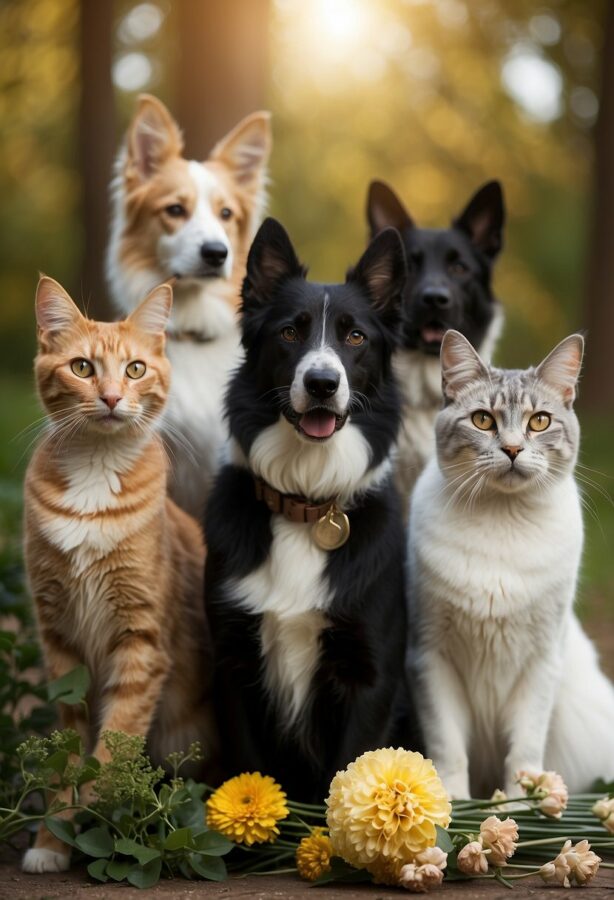
When building your wildlife photography portfolio, focus on capturing the innate beauty of your animal subjects. This endeavor, while challenging, is incredibly rewarding and has the potential to produce stunning images. Here are some expert tips to ensure your portfolio stands out:
Golden Hour Brilliance: Utilize the golden hour, the time shortly after sunrise or before sunset, for softer lighting that accentuates the beauty and textures of wildlife.
Eyes in Focus: Strive to focus on the eyes of your subject; sharp, clear eyes make for a compelling and emotional connection in each shot. Use manual focus if necessary for precision.
Depth of Field Control: Play with depth of field to bring your subject into sharp focus against a beautifully blurred background. An aperture of f/2.8 to f/5.6 often works well.
Composition and Perspective: Get down to eye level with your animal subjects for a more intimate perspective. Creative foregrounds can add depth and interest to your compositions.
Lighting Mastery:
- Natural Light: Maximize the use of natural light to illuminate the detail and coloration of wildlife.
- Backlight and Side Lighting: Experiment with backlight and side lighting to add drama and define the edges of subjects.
Capture Movement: Use a fast shutter speed, at least 1/500s, for freezing rapid movement to ensure your continuous shooting captures the perfect moment.
When organizing your portfolio:
- Select a diverse but coherent set of images.
- Group images thematically or by species.
- Ensure each image is technically sound and artistically captivating.
Whether you are just starting out or already a professional in the field, keep learning and experimenting. Each shot you take brings you closer to perfecting your craft and achieving a portfolio that truly showcases the splendor of wildlife.
Related Resources: